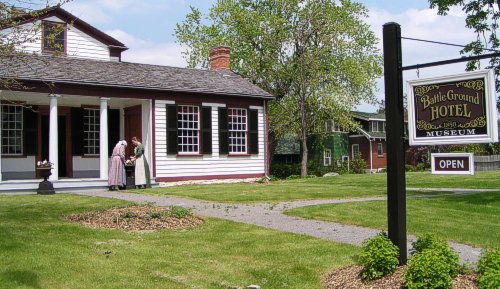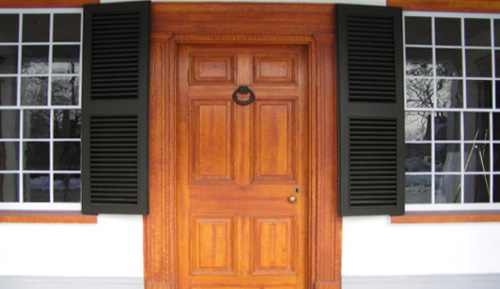Battle Ground Hotel Museum
The Battle Ground Hotel is located at 6151 Lundy's Lane in the heart of Historic Drummondville, Niagara Falls, Ontario, Canada. The Battle Ground Hotel Museum sits on a part of the remaining untouched lands of the Lundy's Lane Battlefield. Visitors to the site are offered a guided tour of the period rooms where they will experience tavern life in 1850. Costumed staff are on hand to give visitors a glimpse into early tourism in Niagara and the fascination with battle fields from the War of 1812.
Located directly across Lundy's Lane from the Battle Ground Hotel is the Drummond Hill Cemetery, location of some of the fiercest fighting of the War of 1812. A monument is located on-site to commemorate the Battle of Lundy's Lane. This is also the location of Laura Secord's final resting place.
The Battle Ground Hotel is open daily from May 1st to October 31st. During the winter months, the site is open by appointment by calling the Lundy's Lane Historical Museum at (905)358-5082.
Hours of Operation
Open Friday to Sunday
Victoria Day to August 30
11pm - 5pm
Closed during Winter
For more information about the Battle Ground Hotel Museum please call (905)357-9866
Statement of Purpose
The Battle Ground Hotel has been restored for the purpose of collecting, preserving, researching, exhibiting and interpreting, in-situ, artefacts relating to the early years of the tourism industry in Niagara Falls, and the legacy of the Battle of Lundy's Lane. The Museum also focuses its programme on early tavern keeping in the Province of Ontario and the life and times of Adam Fralick and his descendants. The Museum also honours the memory of Ruth Redmond and her vision for preserving the Lundy's Lane Battlefield The Battle Ground Hotel is the only surviving example, in Ontario, of a 19th century Tavern which existed as a product of the commemoration of the War of 1812 and as an element of early Ontario tourism, as opposed to other examples of taverns which simply served a domestic role in the community as providers of refreshments and accommodations fro travelers. The Battle Ground Hotel could be said to be a manifestation or statement of Canadian identity because it thrived on the growing 19th century awareness that Ontario and Canada, although inhabited by similar people with parallel cultural and ethnic backgrounds, distinctly differed from the United States as defined by the War of 1812.(Fralick's Tavern Restoration Documents, 2001)
Ruth Redmond & History of Battle Ground Museum
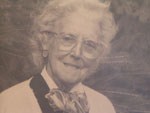
The property on which the Battle Ground Hotel Museum now sits was donated to the City of Niagara Falls by Miss Ruth Redmond, a local school teacher and long time advocate for the preserving the remaining lands of the Lundy's Lane Battlefield. Her dedication to the beautification of the lands at the crest of Lundy's Lane is a lasting example.
The property on which the Battle Ground Hotel Museum now sits was donated to the City of Niagara Falls by Miss Ruth Redmond, a local school teacher and long time advocate for the preserving the remaining lands of the Lundy's Lane Battlefield. Her dedication to the beautification of the lands at the crest of Lundy's Lane is a lasting example.
Friends remember the retired school teacher as a "unique Canadian patriot," a quiet gentle woman who surrounded herself with hundreds of geraniums. At the same time she spent much of her life aggressively acquiring as many portions of the historic battlefield as she could afford. She was determined that one day there would be a "tribute to the boys," as she called them, who died during one of the most significant battles in Canadian history.
In the same way that the poppies of Flanders have been associated with Canada's First World War dead, Redmond wanted to associate red geraniums with those who fell at Lundy's Lane.
Redmond was born in 1902 in Holiford, Ontario, a small town north of Kingston. She grew up aware of her United Empire Loyalist roots, but it wasn't until the age of 94 that Redmond received the certificate verifying her ancestors were among Ontario's early European settlers who had tried to defend Britain during the American Revolution. Redmond and her sister Norma Fiddes, both received their U.E. designation in 1996. (The Review, April 6, 1999)
A high school teacher at Stamford Collegiate for 41 years, Redmond purchased six properties, including Fralick's Tavern, a circa 1830's watering hole adjacent to the historic site, and deeded them to the city several years ago.
Without her efforts, those parts of the original battlefield might have ended up in the hands of developers, local preservationists say.
Redmond graduated from Queen's University in 1923. She attended the Ontario Institute for Studies in Education in Toronto in 1924 to acquire her teaching degree.
In 1926, she followed her older sister, Mildred, a Thorold teacher, to Niagara and was hired by Stamford to teach English and history. She retired in 1967. (The Review, April 6, 1999)
"She chose the geranium to be her personal battlefield flower" said City Councillor Janice Wing, a friend and fellow United Empire Loyalist. This was her memorial to "the boys" as she called them.
Ruth Redmond was always shy about being given credit for what she did, and never sought out publicity or honours, but was always gracious when they came her way. Generations of Canadians will know their history a little better because of the effort she put into assembling the lands for the battlefield memorial park. (The Review, April 7, 1999)
Redmond earned a bachelor of Arts degree in English and history from Queen's University in Kingston, Ontario, in 1923 and then graduated from teacher's college in Toronto. She taught at two Eastern Ontario high schools before coming to Niagara Falls.
But the majority of her teaching career - from 1926-1967 - was spent at Stamford Collegiate.
Once she retired from teaching, gardening became nearly a full-time hobby, earning her 10 summer trillium awards, the City's prize for outstanding horticultural displays. (The Review, April 6, 1999)
The "real stuff" includes a stone marker allegedly placed by the Americans to mark territory claimed before they were pushed back by Canadian forces. It's tucked in one of the lovingly tended flower beds, amidst the shelter of 200-odd evergreens Redmond planted decades ago in her "Shangri-La". The Review, Aug. 27, 1994)
Redmond's fight began in 1954 when she cashed in her Bell telephone shares and purchased her first home.
"I got the house and was so happy," said Redmond, a former teacher at Stamford Collegiate. "Maybe no one else would like the house, but I love it. This is the only place I could ever live."
With that acquisition Redmond began forming a mini-realm. Soon after, she purchased four nearby houses and a plot of land adjacent to her home. The purchase prevented the circa 1831 Fralick's Inn from being razed to make way for a motel. "If I could just live to be 200. I'm sure I could make people realize the importance of preserving where they come from." (The St. Catharines Standard, Nov. 30, 1995)
Map view of Battle Ground Hotel Museum
Battle Ground Hotel Museum - Gallery
The Battle Ground Hotel is a unique historic site as it existed as a result of the growth in tourism to the battle fields of the War of 1812.Located on the site of the fiercest fighting of the Battle of Lundy's Lane, the Hotel became a popular spot for visitors to take a rest and refreshments after strolling the Battle Field and Drummond Hill Cemetery.
Located directly adjacent to the Battle Ground Hotel were two of the five viewing towers located at the top of Lundy's Lane - the highest point in the City of Niagara Falls. Today visitors can enjoy a guided tour of this restored building as they step back to 1850 - the heyday of tourism to 1812 battle fields.
Battle Ground Hotel Museum
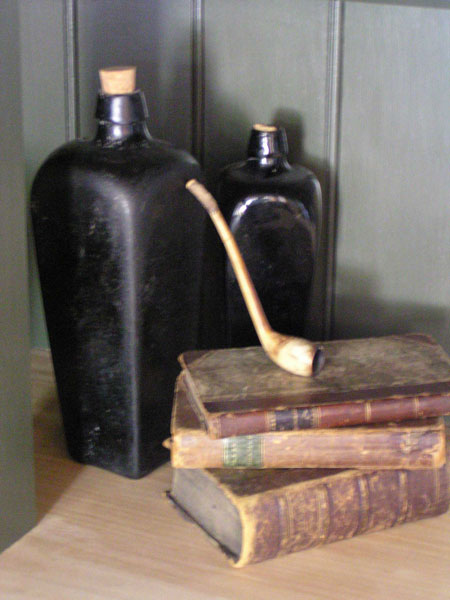
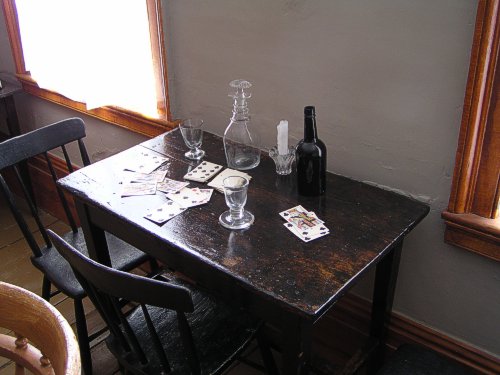
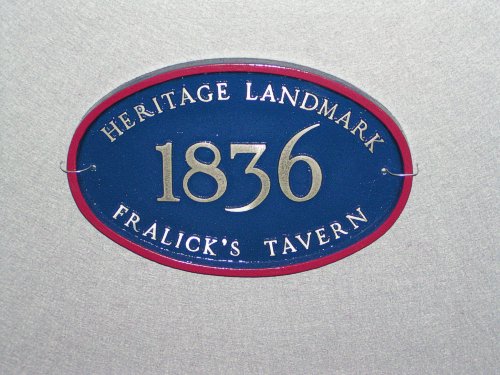
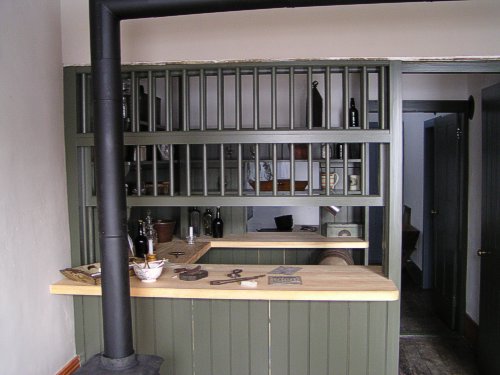
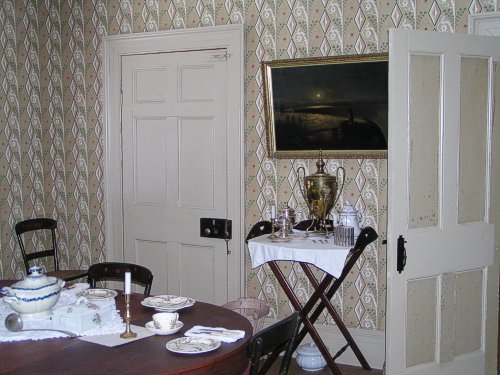
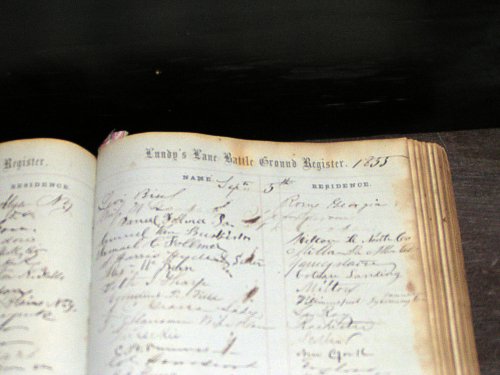
Directions to Battle Ground Hotel Museum
Address:
Battle Ground Hotel Museum
5161 Lundy's Lane
Niagara Falls, Ontario
Phone: 905-357-9866
From Toronto:
Follow QEW Hamilton/Niagara to Hwy 420.
Take the ramp to the right to Hwy 420.
Turn Right at Stanley Avenue
Turn right on Ferry Street
Continue on Ferry Street past Main Street.
The Museum is located at the crest of the hill on the Right Hand side of the street before you reach Drummond Road.
Parking is available by turning left on Drummond Road and left immediately on Buchner Place. There is a parking lot located at the end of Buchner Place.
From the USA (Rainbow Bridge):
Exit customs to Falls Avenue follow it to the right to Roberts Street/Hwy 420.
Turn left at Stanley Avenue
Turn Right on Ferry Street
Continue on Ferry Street past Main Street.
The Museum is located at the crest of the hill on the Right Hand side of the street before you reach Drummond Road.
Parking is available by turning left on Drummond Road and left immediately on Buchner Place. There is a parking lot located at the end of Buchner Place.
From Fort Erie/Buffalo:
Follow QEW Toronto to Hwy #420 (1st Exit past McLeod Road)
Follow the ramp to the right.
At Stanley Avenue Turn Right
At Ferry Street Turn Right
Continue on Ferry Street past Main Street.
The Museum is located at the crest of the hill on the Right Hand side of the street before you reach Drummond Road.
Parking is available by turning left on Drummond Road and left immediately on Buchner Place. There is a parking lot located at the end of Buchner Place

